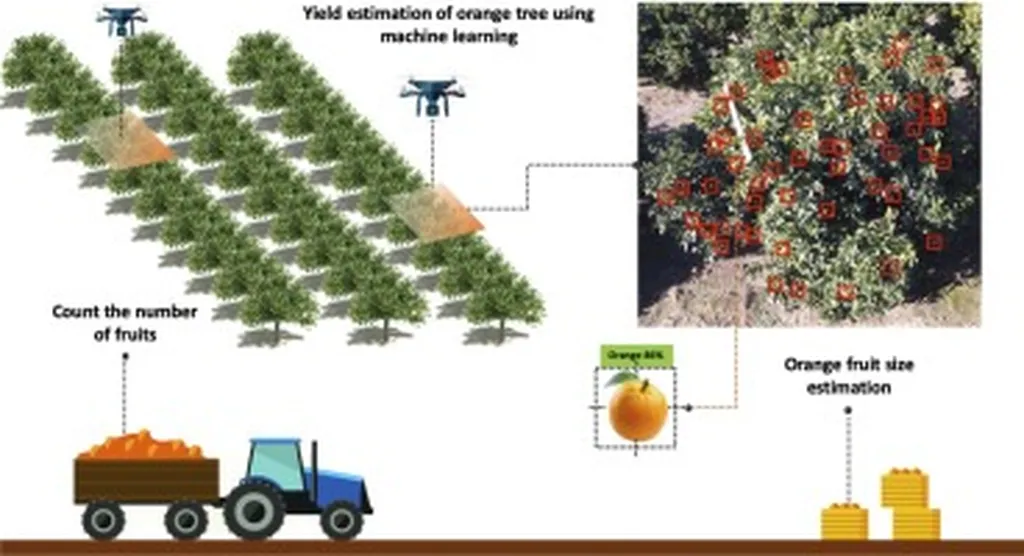In the ever-evolving landscape of precision agriculture, a groundbreaking study led by Daiaeddine Mohamed Jibril from Sultan Moulay Slimane University is set to revolutionize citrus yield estimation. The research, published in the journal ‘Foods and Raw Materials’ (translated to English as ‘Продукты и сырьё’), combines the power of unmanned aerial vehicles (UAVs) and advanced deep learning to bring a new level of accuracy to agricultural management.
The study focuses on the application of UAV imagery coupled with the YOLOv7 object detection model to estimate citrus yield with unprecedented precision. “Accurate citrus fruit yield estimation is crucial for effective agricultural management,” Jibril explains. “Our research demonstrates that UAV remote-sensing systems can capture high-resolution images that provide farmers with invaluable insights for better decision-making.”
The team captured images of citrus trees in their natural field settings using a quadcopter-mounted UAV camera. To enhance the dataset diversity, they applied data augmentation techniques and modified the original YOLOv7 architecture and training parameters. The results were impressive, with a precision of 96%, a recall of 100%, and an F1-score of 97.95%. The correlation between the fruit numbers recognized by the algorithm and the actual fruit numbers from 20 sample trees yielded a coefficient R2 of 0.98.
“This strong positive correlation confirms both the accuracy of the algorithm and the validity of our approach in identifying and quantifying citrus fruits on sample trees,” Jibril adds. The implications of this research are vast, particularly for the agricultural sector. By providing more accurate yield estimates, farmers can optimize their resource allocation, reduce waste, and ultimately increase profitability.
The commercial impacts of this technology extend beyond the farm. “Precision agriculture is not just about improving yields; it’s about creating a more sustainable and efficient food production system,” Jibril notes. “This technology can help reduce the environmental footprint of agriculture by minimizing the use of inputs like water and fertilizers.”
The study’s findings pave the way for future developments in the field. As UAV technology continues to advance, the potential applications for precision agriculture will only grow. “We are excited about the possibilities,” Jibril says. “This research is just the beginning. The integration of UAV imagery and advanced deep learning models has the potential to transform not just citrus farming, but agriculture as a whole.”
In the quest for more efficient and sustainable agricultural practices, this research offers a promising solution. By harnessing the power of technology, farmers can make more informed decisions, leading to better outcomes for both their businesses and the environment. As the agricultural sector continues to evolve, the insights gained from this study will undoubtedly play a crucial role in shaping the future of farming.

